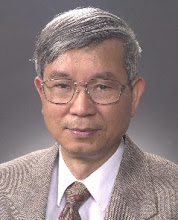http://www.taipeitimes.com/News/editorials/archives/2009/02/11/2003435824
Wednesday, Feb 11, 2009, Taipei Times
The rationale behind the case of Roger Lin (林志昇) et al v the US (“Taiwanese in US flock to sovereignty trial,” Feb. 7, page 3) has been discussed in your letters column over the past several years, always resulting in a vigorous round of rebuttals and denials from readers.
Many readers have argued that Taiwan was never invaded by the US and that Japanese troops in Taiwan surrendered to Chiang Kai-shek (蔣介石), who was a representative of the Allies. They also said the specification of a “principal occupying Power” in Article 23(a) of the San Francisco Peace Treaty (SFPT) has nothing to do with Taiwan.
The concept of “invasion” is not limited to ground troops — bombardment by airplanes and ships also qualifies.
The US’ status as the “principal occupying Power” over Taiwan is expected since all attacks against (Japanese) Taiwan during World War II were conducted by US forces.
Rights and obligations for the occupied territory fall to “the (principal) occupying Power” — the “conqueror.”
By contrast, neither The Hague nor the Geneva Conventions accord any status to the “troops that accept the surrender.”
Four facts are key:
One, none of the Allies recognized any transfer of the sovereignty of Taiwan to China at the time of the Oct. 25, 1945, Japanese surrender ceremonies.
Two, the mass naturalization of native Taiwanese people as Republic of China (ROC) nationals/citizens in January 1946, during a period of belligerent occupation, is illegal under international law.
Three, the 1952 post-war peace treaties did not award the sovereignty of Taiwan to China. As a result, native Taiwanese people are today without an internationally recognized nationality.
Four, military government is “the form of administration by which an occupying power exercises governmental authority over occupied territory.”
SFPT Article 4(b) asserts the validity of the US Military Government (USMG) directives pertaining to Article 2 and Article 3 territories — including Taiwan. Such a specification confirms that USMG jurisdiction over Taiwan is active.
My lawsuit seeks declarations that native Taiwanese people have “rights under the US Constitution” resulting from the treaty specifications.
In Saturday’s story it was suggested that some Taiwanese groups feel this lawsuit conflicts with the goal of Taiwanese independence. I don’t believe this is a valid criticism.
The nation’s various “pro-independence groups” have never produced a unanimous statement on Taiwan’s current international legal status.
As a result, their efforts mainly consist of trying to enable Taiwan to become “independent” from China (the ROC or the People’s Republic of China). However, such efforts are doomed to failure. My lawsuit clarifies the facts for all the world to see — Taiwan is an overseas territory under the jurisdiction of the USMG.
As an occupied territory, Taiwan has not yet reached a “final political status” — it is “undetermined.” The logic is straightforward.
Native Taiwanese people are entitled to hold passports of the SFPT’s principal occupying Power — the US. The Taiwanese public’s desire for self-government can only be achieved by first recognizing their current situation.
ROGER LIN
Taipei
Subscribe to:
Post Comments (Atom)

One of the main goals of the Taiwan Independence advocates has been for Taiwan to enter the United Nations. However, Taiwan does not have a snowball's chance in hell of entering the United Nations. This is very evident when you consider that the PRC, as a member of the Security Council, has veto power over new memberships.
ReplyDeleteHence, those of us who really want Taiwan to have a more prosperous future need to look at the legal efforts being put forward by Roger Lin and his team. This could lead to very positive developments for Taiwan.
I found some more details on the internet at http://www.civil-taiwan.org/usca.htm